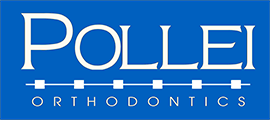Oral Hygiene
The best way to ensure a clean and healthy smile is brushing and flossing. Food that accumulates on teeth and in braces creates plaque. The bacteria that live in plaque can cause gum disease, tooth decay and white spots, and even eventual loss of teeth. To avoid these problems adequate time and attention must be given to make sure your braces, teeth and gums maintain optimal health.
Brushing
Use a toothbrush with soft bristles and a small strip of fluoride toothpaste. When you brush your teeth, move the brush in small, circular motions. Hold the toothbrush at an angle and brush slowly and carefully, covering all areas between teeth, between braces and the surface of each tooth. Brush up on the lower teeth, down on the upper teeth and the outside, inside and chewing surface of your front and back teeth. Pay particular attention to the area between braces and gums, and the area around bands or appliances in the back of your mouth. Brush your tongue and the roof of your mouth before you rinse. It will take you several minutes to brush your teeth well – using a timer helps you to not rush the process. After brushing, visually check your teeth and brackets to make sure they are free of plaque. If they don’t bling, they aren’t clean!
Especially during orthodontic treatment, brush your teeth several times daily to avoid the accumulation of plaque. Ideal times to brush include:
- In the morning after breakfast
- After lunch or right after school
- After dinner
- At bedtime
You will need to replace your toothbrush more often due to your appliances. As soon as the bristles start to wear down or fray, replace your toothbrush with a new one. It may be difficult for your toothbrush to reach some areas under your archwire. It is important to floss and use an antibacterial and fluoride mouthwashes throughout your orthodontic treatment and beyond for optimal oral hygiene.
Interdental (Christmas tree) Toothbrush
An interdental toothbrush is used to clean underneath and around your wires and braces and between your teeth. Use the Christmas tree brush gently to avoid damaging your wires. This won’t take the place of a regular toothbrush, but is used in addition to it to help you to clean your braces while maintaining healthy teeth and gums.
Flossing
For areas between the teeth that a toothbrush can’t reach, use dental floss to remove food and plaque. Flossing takes more time and patience when you are wearing braces, but it is important to floss your teeth every day.
Use Superfloss or a floss threader to floss under your archwire daily. You will be able to feel when the tooth is clean and hear the squeak of the floss against your clean teeth. Use care around your archwire or bonded retainer and do not floss too forcefully around it or put too much pressure on it. After you floss between your archwire and braces, floss between your other teeth and gums.
If you are flossing without the floss threader, pull a small length of floss from the dispenser. Wrap the ends of the floss tightly around your middle fingers. Guide the floss between all teeth to the gum line. Unwrap clean floss from around your fingers as you go, so that you have used the floss from beginning to end when you finish. Floss behind all of your back teeth.
Floss at night to make sure your teeth are clean before you go to bed. When you first begin flossing around your braces, your gums may bleed a little. If the bleeding does not go away after the first few times, inform a staff member at your next appointment.
Fluoride Rinses
Fluoride rinses are available at most grocery stores and drugstores to help prevent cavities. These should be used according to the manufacturers instructions each night after flossing and brushing.
Antibacterial Mouthwash
Antibacterial mouthwashes will reduce inflammation to your gums and cheeks. They help to prevent infection and decrease irritation that may develop from your braces. There are many OTC mouthwashes available to use; choose the one that works best for you and follow the manufacturers instructions. Antibacterial mouthwashes can be used for general irritation caused by your braces or for canker sores, cheek bites and other minor temporary injuries to the gums.
Cleaning Your Retainers
Brush your retainers every day as a part of your regular brushing and flossing schedule. Because food and plaque can accumulate on your appliance just as they do on your teeth, daily cleaning is vital. Occasionally, you may soak your retainer for 5-10 minutes along with antibacterial mouthwash or a denture – cleaning tablet in a glass of tap water at room temperature. Your appliance will taste better, and you will minimize plaque and bacterial accumulation.
Foods to Avoid
For most situations, common sense will tell you what to avoid. Hard foods, sticky foods and foods high in sugar must be avoided. Hard foods can break or damage wires and brackets. Sticky foods can get caught between brackets and wires. Minimize sugary foods; they cause tooth decay and related problems. Nail biting, pencil and pen chewing and chewing on foreign objects should be avoided. When braces are placed, each patient receives a “No-no” list of foods to avoid. If you ever loose your list or would like a second copy, just let us know.
Other Maintenance
It’s important to regularly check your braces for bent or loose wires and brackets. In the event of a loose/broken wire or bracket, call our office immediately and we’ll arrange an appointment to resolve the loose bracket or wire.
